In anime, a trap is a boy that looks like a girl, or, more typically, a girl that turns out to be actually a boy, because the author drew a girl, and then used this female design for a character that's canonically male. A reverse trap is the reverse: when a boy turns out to be actually a girl.
What "looks like" means exactly, and what counts as a trap or doesn't varies from person to person, such that the same character may be considered a trap to one person, but not to another.
In the image below, there are exactly six male and six female characters, ordered by hair length. Some of them are crossdressing. If you can't guess their gender correctly, congratulations, you've found a trap.
Fujioka Haruhi 藤岡ハルヒ
Naoki Miki 直樹美紀
Totsuka Saika 戸塚彩加
Edward Wong Hau Pepelu Tivrusky IV, エドワード・ウォン・ハウ・ペペル・チブルスキー4世
Shiota Nagisa 潮田渚
Gokuraku Nozomi 獄落希
Konoe Subaru 近衛スバル
Borr ボラー
Iwa-ki-yama-yuki-sato-shiro-na-no-go-juu-roku-shi Akira 岩木山雪里白那之五十六子晶
Integra Fairbrook Wingates Hellsing, インテグラル・ファルブルケ・ウィンゲーツ・ヘルシング
Kanzaki Hideri 神崎ひでり
Koibuchi Kuranosuke 鯉淵蔵之介
Anime: Ouran High School Host Club, Ouran Koukou Hosuto-Bu 桜蘭高校ホスト部 (Episode 1)
Anime: Gakkou-gurashi! がっこうぐらし! (Episode 6)
Anime: Yahari Ore no Seishun Love Comedy wa Machigatteiru. やはり俺の青春ラブコメはまちがっている。 (Episode 3)
Anime: Cowboy Bepop, カウボーイビバップ (Episode 9)
Anime: Assassination Classroom, Ansatsu Kyoushitsu 暗殺教室 (Episode 2)
Anime: Centaur no Nayami, セントールの悩み (Episode 2)
Anime: Mayo Chiki! まよチキ! (Episode 7)
Anime: SSSS.GRIDMAN (Episode 11)
Anime: Kemono Jihen 怪物事変 (Episode 2)
Anime: Hellsing Ultimate (Episode 2)
Anime: Blend S, ブレンド・S (Episode 10)
Anime: Kuragehime 海月姫 (Episode 2)
Definition
The anime slang "trap" means either:
- A boy that looks like a girl.
- A character you have mistaken for a girl.
If the author draws a girl, and says it's a boy, that's certainly a trap, but there are various characters whose design isn't so simple, such that whether a character counts as a trap or not ends up varying from person to person.
Anime: Nanbaka ナンバカ (Episode 1)
- Context: it doesn't get more trap than this.
- ♂ - the symbol for the planet "Mars," kasei 火星, means "male."
- ♀ - the symbol for the planet "Venus," kinsei 金星, means "female."
The following are normally called traps:
- Androgynous characters, that don't look obviously male, nor obviously female.
- Flat-chested, since breasts are feminine.
- Not muscular, since muscles are masculine.
- With medium length hair, since short hair is masculine, and long hair is feminine.
- Without facial or body hair, since both are masculine.
- Wearing clothing that's hard to classify by gender. In particular, sometimes a character has a weird outfit because they're from a tribe, or ancient race, etc., that's impossible to classify.
- Characters who haven't finished puberty, or haven't even started it, are more likely to fall into this category due to the lack of secondary sexual characteristics.
- Male characters that appear feminine.
- Acting timid, blushing, has a maidenly personality, otome 乙女.
- Physically weak, long hair, short stature, large hips.
- Eating sweets, liking girly things.
- Wearing hair accessories, cute phone straps, earrings.
- Having a female voice, avoiding masculine language, speaking politely, since stereotypically "women don't curse," etc.
- Getting treated like a girl by other characters, e.g. by them falling in love with him.
- Getting treated like a girl by the series, e.g. by getting featured in fanservice scenes.
- Crossdressers that pass as a girl.
- It doesn't matter the reason, he could be a crossdresser as a hobby, or could be pretending to be a girl for some reason, e.g. infiltrating somewhere.
- A guy that crossdresses but just looks like a guy crossdressing isn't a trap, e.g. Joseph Joestar ジョセフ・ジョースター.
- In particular, a stereotypical muscular, bearded character in drag would be an okama オカマ character. This term is sometimes used pejoratively toward effeminate men, gay men, and trans women, similar to "faggot" in English, but it's also sometimes used by such people to refer to themselves, e.g. a "gay bar" often calls itself an "okama bar."
Anime: Gatchaman Crowds, ガッチャマン クラウズ (Episode 2)
- Context: Ninomiya Rui takes off his wig, to reveal his natural, very masculine hairst—no, wait, he still sorta looks like a girl without the wig, except now short-haired.
Even among the types above, things can get complicated. For example:
- Narancia Ghirga ナランチャ・ギルガ, from JoJo's Bizarre Adventure, isn't considered a trap by most people, due to this character being obviously muscular. However, presumably due to the series' art style making female characters look rather muscular, too, or due to the bizarre fashion style characters have, like the main character having a heart-shaped cleavage window in spite of being male, a good number of people have mistaken him for a girl, or count him as a trap.
Someone who doesn't watch anime will promptly assume a character is male or female based on how they look like, and they'll be right most of the time.
However, people who watched a lot of anime, and have seen their fair share of traps and reverse traps, know that appearances can be misleading, that short haired guy can turn out to be a girl, and a long haired character can be a boy.
Anime: The iDOLM@STER, アイドルマスター (Episode 15, Stitch)
- Context: a girl that looks like a guy looking like a guy dressed like a girl making double ILY signs.
- kawaiku kaizou saretai!
かわいく改造されたい
[I] want to be modified cutely. (literally.)
- In the sense of being transformed into a more cuter version of oneself.
Androgynous characters are more likely to confuse long-time fans, while feminine characters are more likely to confuse new anime fans who aren't used to these twists.
Characters that are said to be "trap characters" are either androgynous or feminine, or constantly crossdressing, that is, they're always and constantly traps.
Besides these, sometimes you have a character that isn't a " trap character," but ends up crossdressing in a scene, making them a trap temporarily.
- Yoshii Akihisa 吉井明久, from Baka to Test to Shoukanjuu バカとテストと召喚獣, is not a trap character, but happens to have crossdressed in a few episodes, so one would call the crossdressing design "trap Akihisa."
- Hibiki Yuuta 響裕太, from SSSS.GRIDMAN, is not a trap character, but happens to have crossdressed for mere two minutes in a post-credits scene of a single episode in a 12 episode series of 23 minutes each, and that's all it takes for one to call this crossdressing design "trap Yuuta."
Middle: Takarada Rikka 宝多六花
Right Hibiki Yuuta 響裕太
Anime: SSSS.GRIDMAN (Episode 8, Stitch)
- Context: the shortest lived trap design in the world, that only exists because of a typical crossdressing event in a school "culture festival," bunkasai 文化祭.
The following do not count as traps, simply because there are other terms for them:
- futanari ふたなり, "hermaphrodite" characters, who have both a penis and vagina somehow, and typically have female breasts, too.
- Crimvael クリムヴェール, from the NSFW Ishuzoku Reviewers 異種族レビュアーズ, is a hermaphrodite, as angels usually are.
- Mill Varna ミル・ヴァルナ, the main heroine of Maze☆Bakunetsu Jikuu MAZE☆爆熱時空, is a hermaphrodite in the manga, but not in the anime.
- Intersex characters, who were born neither fully male nor fully female.
- Luca Esposito ルカ・エスポジト, from Kanata no Astra 彼方のアストラ, is intersex.
- Note: intersex people were historically called futanari in Japanese, however, nowadays this term is restricted to fiction, and the correct term would instead be "intersexual," intaasekushuaru インターセクシュアル.
- "Sexless" characters, musei 無性, in the sense of lacking sexual organs, not in the sense of not getting laid.
- Rimuru Tempest リムル=テンペスト, from Tensura 転スラ, is a man who reincarnated in another world, in an isekai 異世界, as a sexless slime.
- Gender benders: characters that switch sexes from male to female (nyotaika 女体化) or female to male (nantaika 男体化).
- Mitsuka Souji 観束総二, from Ore, Twintail ni Narimasu 俺、ツインテールになります, transforms into a magical girl when fighting.
- Uno Saki 卯野さき, from Mahou Shoujo: Ore 魔法少女俺, transforms into a muscular guy when fighting.
- Maze メイズ, the protagonist of Maze☆Bakunetsu Jikuu MAZE☆爆熱時空, has a female personality and body at day, and a male one at night.
- Tanya Degurechaff ターニャ・デグレチャフ, the protagonist of Youjo Senki 幼女戦記, is a man who dies and reincarnates in another world as a girl.
- A G.I.R.L: Guy In Real Life. A male character that has a female avatar online (nekama ネカマ), or a female character that has a male avatar online (nenabe ネナベ).
- Morioka Moriko 盛岡森子, from Net-juu no Susume ネト充のススメ, is a woman who plays a male character and falls in love with a female character online.
Some exceptional examples include:
- In Sword Art Online's Gun Gale Online arc, the female-looking avatar of Kirito キリト, known in the fandom as "trap Kirito," or Kiriko キリ子, is considered a trap by both English and Japanese fandoms, because the avatar isn't actually female, it's a male avatar with long hair, i.e. literally a trap avatar.
- In Uchouten Kazoku 有頂天家族, Shimogamo Yasaburou 下鴨矢三郎 is a male tanuki 狸, "raccoon dog," which in Japanese folklore and within the series have the ability to shapeshift. In the first episode, he appears in the form of a girl wearing a sailor uniform typical of high school girls. Did he transform into a human girl, or did he transform into a human boy dressed as a girl?
Characters of unknown gender are sometimes called traps.
If their gender is never canonically disclosed, there's no "turns out to be a boy" part, so people who use this criterion won't call this character a trap.
Conversely, there a chance you have "mistaken the character for a girl," if you thought they were a girl, but it was never confirmed, so people who use this criterion will call the character a trap.
- Crona クロナ, from Soul Eater ソウルイーター, is timid, has feminine mannerisms, wears nun-like clothing, has short, pink hair, uses masculine pronouns, and is possibly attracted to girls, making them an absolutely queer mishmash of gender stereotypes with no canonical gender disclosed.
Some characters are heavily hinted to be of a gender, but due to their queer appearance and lack of explicit in-universe information confirming their gender, may end up perceived as traps.
- Kurapika クラピカ, from Hunter x Hunter ハンター×ハンター, has middle-length blond hair, cat-like eyes, and wears an unusual outfit. Many fans have mistaken him for a girl, and nowadays there are theories his gender is still technically unknown. In particular, there's a scene where Kurapika is disguised as a woman, and removes a long-haired wig saying appearances can be deceiving, but he still looks like a girl after removing the wig. Was this intended to be a gag? Well, I laughed.
- Envy エンヴィー, from Fullmetal Alchemist, Hagane no Renkinjutsushi 鋼の錬金術師, looks like a guy, or a rather muscular woman. He has long, green hair, like a palm tree, and wears clothing that reveals his midriff. This top covers his chest, leading one to assume it's because it's a female chest.
Middle: Kurapika クラピカ
Right: Envy エンヴィー
Anime: Soul Eater (Episode 8)
Anime: Hunter x Hunter (1999) (Episode 3)
Anime: Fullmetal Alchemist, Hagane no Renkinjutsushi 鋼の錬金術師 (2003) (Episode 31)
- Context: the authors of the respective series have deliberately designed these characters like this for some reason.
In regards to trans characters, it's complicated.
- Some fans won't use the term "trap" at all, because for them it's a transphobic slur, some preferring the term "femboy" instead.
- Femboy, literally feminine boy, isn't an anime slang, but a gay slang, which was originally a homophobic slur like sissy or wimp. A softer variant is femboi.(dictionary.com)
- Not all traps are femboys. A femboy would have to appear feminine somehow, but some traps are merely androgynous or crossdressers.
- Some people in real life call themselves traps. Since trap is originally an anime slang, they're basically labeling themselves as part of the trap genre.
- Some fans won't use the term "trap" with trans characters, because for them a trap can't be trans.
- Many trap characters said to be "trans" are only argued to be trans by fans, and basically never explicitly canonically labelled trans by the authors, making it debatable whether they're actually trans in first place.
- As such, whether a character is considered trap or trans ends up being completely arbitrary.
- Some fans will use the term "trap" with trans characters but not with real people, because they don't think "trap" in anime context is a slur, but "trap" toward real people is a slur.
- While most anime is a ridiculous and cute caricature largely detached from real life, some series attempt to portray people realistically, so characters are like real people, and a trans character would be like a real trans person. In this case, where is the line drawn?
- Some fans don't consider "trap" to be a slur, since they only see this word used in anime as a genre, toward anime characters, so the idea of using it as an insult toward real people would never cross their minds.
- Specially when you consider that many anime fans don't even live in English-speaking countries in first place and they only speak in English with other anime fans over the internet.
- Some fans won't use the term "trap" toward transsexual characters that have breasts, simply because they have breasts and for them traps don't have breasts, which means that, coincidentally, they won't use the term "trap" toward several characters whose trans status isn't debatable.
- Mariandale マリアンデール, from Ixion Saga, has female breasts, and that's all you'd need to know to assert she isn't a trap.
- Such characters are generally called newhalf ニューハーフ in Japanese, a term used by trans people, considered a non-pejorative alternative for okama.
If it doesn't make sense to say a loli character isn't a loli just because it says "age: 500 years" in her character profile, it shouldn't make sense to say a trap character isn't a trap just because it says "gender: female" in her character profile.
- Astolfo アストルフォ requested his gender to be set as unknown in Fate/Grand Order, but everyone assumes he's a trap, because he obviously is.
At least drawing the line on whether the character has breasts or not sounds a little less arbitrary, even if an exception were to be made for crossdressers that wear pads.
Middle: Criff Kei クリフ・ケイ
Right: Miyanokouji Mizuho 宮小路瑞穂
Anime: The God of High School (Episode 11)
Anime: Mugen no Ryvius, 無限のリヴァイアス (Episode 5)
Anime: Otome wa Boku ni Koishiteru 乙女は僕に恋してる (Episode 1)
- Context: a cis girl, a trans girl, and a cis male crossdresser, all featuring breasts for some reason.
- Nobody would call the cis girl a trap.
- Somebody would call the trans girl a trap;
- Everybody would call the crossdresser a trap.
Since different people have different criteria for categorizing a character as a trap or not, that means it's a subjective matter, which means trapness is an extrinsic property observed by others, and has nothing to do with intrinsic properties like gender identity.
Instead of "a girl that turns out to be a boy," which can be interpreted as misgendering, we're specifically referring to a subverted expectation born from a contradiction of perceived gender stereotypes ideologically:
- Trap: a character that looks like a girl, but upon further inspection they look closer to what you would imagine a boy to be like rather than what you would imagine a girl to be like.
- Just like there are women that don't look like women in spite of being women, whether a character looks like a girl, but looks more like a boy is irrelevant to whether they're actually a girl or a boy.
A sense of cuteness derived from subversion is called gap moe ギャップ萌え. Unfortunately, what is moe 萌え varies from person to person, too, so it doesn't help narrow down anything.
If you have:
- A trans character from a silly and cute series that only made the character that way because of the trap trope
- A trans character from a serious series that made the character that way because it's a drama focused on transgender issues.
Even if these two characters looked identical, would it really make sense to lump them together in the same trap genre, given how completely different the mood and intent of their respective series are?
Middle: Nitori Shuuichi 二鳥修一
Right: Chiba Saori 千葉さおり
Anime: Hourou Musuko 放浪息子 (Episode 1)
- Context: there's a trap and a reverse trap in this picture, or there is not, depending on whom you ask.
- onna no ko tte nande dekiteru?
女の子って何で出来てる?
What are little girls made of? - osatou to supaisu to suteki-na nanimo kamo
お砂糖とスパイスと素敵な何もかも
Sugar and spice and all things nice. - sonna mon de dekiteru yo
そんなもんで出来てるよ
That's what little girls are made of. - A nursery rhyme from the 19th century featured in the anime.
- See: What Are Little Boys Made Of? - wikipedia.org.
- onna no ko tte nande dekiteru?
On the other hand, if the term trap was limited to characters designed to fill a trap niche, then we'd be excluding characters that weren't designed with such purpose, but end up getting called traps by some fans nonetheless, like Kurapika.
Considering everything, the usage of the term just really varies from person to person, and trying to enforce any strict definition is certain to fall apart whenever you encounter an edge case.
How to Say "Trap" in Japanese
The word for "trap" in Japanese depends on what you mean by "trap" in English. Let's start with translations of common words:
- wana
罠
A trap setup by someone in order to cause harm. For example: - otoshiana
落とし穴
"Dropping hole." (literally.)
The sort of trap which is a hole in the ground where people fall, very common in anime, where the ground crumbles and the character falls into a bottomless dark abyss and then magically survives the fall somehow. - shikake
仕掛け
A "setup," as in the sense of setting up a trap, or an ambush. - torappu
トラップ
The katakanization of "trap."
This term is used to refer to "trap" music, which is a subgenre of hip hop that makes reference to drug use. In this case, its due to the word "trap" being an "‘80s and ‘90s Atlanta slang for a house used to sell drugs"(redbull.com).- torappu kaado
トラップカード
Trap card. In Yu-Gi-Oh, a card that activates when the opponent does something. - furereba tentou (torappu obu arugaria)
触れれば転倒!(トラップ・オブ・アルガリア)
Trap of Argalia. Spelled "if [you] touch [it] [you] fall," see gikun 義訓. This is the name of the lance noble phantasm used by Astolfo in the Fate franchise, who is a well-known anime trap.
- torappu kaado
None of the terms above refer to anime traps. "Trap" is an English anime slang, it doesn't come from Japanese, so, naturally, "trap" in Japanese doesn't mean the same thing as "trap" in English.
Most anime traps would be called this in Japanese:
- otokonoko
男の娘
"Male girl." (literally.)
This term is a wordplay on:
In moe 萌え culture, characters are often designed with some sort of cute trait or quirk in mind.
See moe attributes for details.
In a harem anime, for example, you'll have multiple heroines each with a different quirk. You'll have a quiet girl, an energetic girl, a girl that wears glasses, a perverted girl, a maid, and so on, and, finally, you'll have a girl that's actually a boy, and that's the otokonoko character.
That is, the fact that the girl is a boy is the girl's quirk. For all intents and purposes, the otokonoko character is treated like any other heroine in the series, by fans, and sometimes in-universe, except that he's a guy.
It's like he's a meganekko メガネっ娘, "glasses girl," but instead of wearing a pair of glasses, he wears "gender: male" in his character profile.
Behind: Fujinomiya Neko 藤ノ宮寧子
The guy: Makabe Masamune 真壁政宗
Right: Shuri Kojuurou 朱里小十郎
Bottom: Adagaki Aki 安達垣愛姫
Anime: Masamune-kun no Revenge, 政宗くんのリベンジ (Episode 7)
- Context: a typical harem, featuring:
Such characters are associated with the fujoshi 腐女子, female fans that like shipping guys with guys, i.e. BL, yaoi, such that if you have a fujoshi and an otokonoko in the same series, she'll probably find a way to make him crossdress or something of sort.
- In the very series above, Tae manages to make Kojuurou play Snow White in a theater piece.
The term otokonoko was originally an anime slang, but nowadays there are also real people that call themselves otokonoko, exactly like how real people call themselves "trap" in English following the anime slang.
Most characters called "trap" in English are called otokonoko in Japanese, and most trap tropes are otokonoko tropes, however, not all traps fall into this definition.
An otokonoko is close to the term "femboy," in that it's a character that's either androgynous or feminine enough to be perceived as a girl even if he isn't crossdressing.
A character that's only a trap when he's crossdressing isn't an otokonoko. Instead, he'd be called:
- josou danshi
女装男子
Crossdressing boy.- josou
女装
"Female clothes."
A guy wearing female clothes is effectively "crossdressing." - ei-men, bi-men
A面,B面
A side, B side. (as in the sides of a cassette tape, an ancient data storage device that was used to play music. The A side would be the front side, and B the back.)
Persona while crossdressing, and while not crossdressing. In English, for a male crossdresser, these would be called "girl mode," and "boy mode," respectively.
- josou
- josoko
女装子
Crossdresser (male). Used toward guys who crossdress professionally.
Anime: Kuragehime 海月姫 (Episode 3)
- Context: a crossdresser checking his "fake breasts," nise-chichi 偽乳.
A character that isn't sufficiently feminine or masculine would be just:
- chuusei-teki
中性的
Androgynous.
Like any niche fandom, there are countless ill-defined terms its member have come up with to refer to feminine male characters, which are barely used by anybody, so they're not really worth mentioning.[see the related tags of 男の娘 on dic.pixiv.net for details.]
One noteworthy term would be a generally NSFW way to say "femboy" in Japanese:
- mesu-danshi
メス男子
Female boy. (literally.)
A lewd effeminate male character.- The word mesu 雌 means "female," but is normally only used toward animals, i.e. it's a biology term.
- It's vulgar to call a woman "a female" in this manner, as it would be dehumanizing by referring to her like an animal. It also has sexual connotations, as it's implied that the reductive purpose of a female is to copulate with a male, and vice-versa.
- Related slangs include mesui メスい, "female-y," and the NSFW genre mesu-ochi メス堕ち, "female fall," in the sense of becoming a female, with the nuance that a female is inferior to what the character was previously, e.g. a civilized, dignified woman, hence "fall," as in fall from grace.
It lacks a strict definition, and its usage seems to range from male characters with female proportions, e.g. implying the influence of female hormones on fat distribution, or characters that sexually provocative in a feminine way.
In either case, these aren't characters you'd find in the average anime, since anime traps are cute girls, not provocative girls.
The page on Pixiv cites Patalliro!, パタリロ!, a BL series targeted at girls, as having examples of such characters.
- In the series, one of the main characters, Bancoran バンコラン, says he has no interest in women, his gaze makes pretty boys blush, who wouldn't hesitate to go to bed with him in the same episode they just met.
Presumably, similar characters would also fit the definition, e.g.:
- Fish Eye フィッシュ・アイ , from Sailor Moon セーラームーン, a magical girl series targeted at girls.
In rare cases, the katakanization of "trap," torappu トラップ, is used in reference to the English anime slang "trap."
- Torappu Hiroin
トラップヒロイン
Trap Heroine. A romance-comedy manga series whose heroine is a trap character.
The term "reverse trap" comes from English anime slang "trap" and from the English translation of the Japanese word gyaku 逆, "reverse," which is used in scenarios where gender roles are reversed. For example:
- gyaku-haaremu
逆ハーレム
Reverse harem. A harem in which the protagonist is female and the rest of the cast is male. - gyaku-nanpa
逆ナンパ
Reverse hitting on. Guys hitting on girls is nanpa, getting hit on by girls is gyaku nanpa.
Since there's no word for "trap" in Japanese, there's also no such thing as gyaku-trap.
Japanese equivalents for reverse trap would be the female equivalents of otokonoko and josou danshi:
- onnanoko
雄んなの子
Girl that looks like a guy. - dansou joshi
男装女子
Crossdressing girl. Girl wearing male clothes.
The term onnanoko isn't really used.
This term is a miserable attempt to match otokonoko by spelling {onna no} ko 女の子, "female child," "girl," with the kanji for osu 雄, "male," which is the male counterpart of mesu, and carries the same animal, vulgar, and sexual connotations..
The typical reverse trap character, who's flat-chested and has short hair, is simply called the same thing a real-life girl who looks like a boy would be called:
- booisshu
ボーイッシュ
Boyish. (appearance.)
Tropes
For reference, some anime trap tropes:
Crossdressing Tendency
If a trap looks like a girl without dressing like one, there's a very high chance that he'll end up crossdressing eventually regardless.
In particular, if a weird situation arises that ONE GUY has to pretend to be a girl, the trap is the logical choice, since he's most likely to pass for a girl.
- In Ranpo Kitan 乱歩奇譚: Game of Laplace, Kobayashi Yoshio 小林芳雄 disguises himself as a girl to act as a decoy for a kidnapper that only targets girls.
Anime: Assassination Classroom, Ansatsu Kyoushitsu 暗殺教室 (Episode 20, Stitch)
- Context: a class plans to infiltrate a club, deciding that the boys should stay behind, and only the girls should go, as a group of girls walking around in a club wouldn't rise suspicion. The teachers say it's too dangerous for the girls to go alone, and decide a boy should accompany them. Among all male students, logically, the trap is the one that ends up having to pretend to be one of the girls.
This tendency to crossdress means traps also tend to fall into crossdressing tropes, like blackmail.
Right: Akabane Karma 赤羽業
Anime: Assassination Classroom, Ansatsu Kyoushitsu 暗殺教室 (Episode 20)
More Feminine Than a Girl
A trap is often cuter and more maiden-like than the average girl of a series. There are a few reasons for this.
First, otokonoko are a type of gap moe: there's a contradiction in a guy being feminine, so the more feminine he is, the greater the contradiction, the greater the gap, and the greater the moe.
From Steins;Gate, episode 2:
- Context: Okabe Rintarou 岡部倫太郎 describes Urushibara Ruka 漆原るか.
- Urushibara Ruka, koe mo shigusa mo onna ni shika mienai
漆原るか、声も仕草も女にしか見えない
Urushibara Ruka, [his] voice and mannerisms can't be seen as anything but female. - ...iya, onna yori onna-rashii bishoujo.
・・・いや、女より女らしい美少女。
...no, compared to a woman [he] is a more woman-like bishoujo.
...no, [he] is more feminine than a girl.- Note: in dating sims, games where you can conquest romantic partners, pretty much every girl is said to be a bishoujo, literally "beautiful girl." Similarly, anime characters generally only have pretty girls, i.e. bishoujo characters, even if some are prettier than others.
- When Okabe says this sentence, he doesn't mean that Ruka is a girl, but that he's more of a bishoujo than the average girl is.
- daga otoko da.
だが男だ。
But [he] is a guy. - Mayuri yori se wa takai ga, karada-zuki wa totemo hosoi.
まゆりより背は高いが、身体付きはとても細い。
Compared to Mayuri, [he] is more tall, but his body-build is very thin.
[He] is taller than Mayuri, but [his] body is very thin.- Note: "∅ {se wa takai}" is a double subject construction with a contrastive wa. The contrast is between the topics se wa and karada-zuki wa.
- daga otoko da
だが男だ
But [he] is a guy. - miko-fuku ga niatte-iru
巫女服が似合っている
The shrine-maiden-clothes suit [him].
[He] looks great a shrine maiden outfit. - daga otoko da
だが男だ
But [he] is a guy. - ...mou yuu-gure da toiu noni, atsui na. semi ga naite-iru.
…もう夕暮れだというのに、暑いな。セミが鳴いている。
...it's already evening but it's [still] hot. The cicadas are crying. - daga... otoko da.
だが・・・男だ。
But... [he] is a guy,
The archetypal trap being cuter than the average girl leads to phrases like this:
- konna {kawaii} ko ga {{otoko no ko} no} hazu ga nai}!
こんな可愛い子が男の子のはずがない!
Such {cute} person {can't possibly {be a {boy}}}!
There's no way a girl this cute is a guy!
- Used by Makise Kurisu on Urushibara Ruka.(Steins;Gate, Episode 8)
Since a girl that acts too cute can turn out to act like that because they're a trap character, the opposite conclusion also ends up being valid:
- konna {kawaii} ko ga {{onna no ko} no} hazu ga nai!
こんな可愛い子が女の子のはずがない!
Such {cute} person {can't possibly {be a girl}}!
There's no way a girl this cute exists!
The second reason is that, ironically, if you make a female character that's stereotypically feminine, that ends up being literally nothing more than a stereotype. A girly girl that likes girly things will look like a mockery of girls in real life.
But if that character is actually a guy now that's completely different.
Stereotypical girl = boring.
Stereotypical girl that's actually a guy = wow, Earth-shattering originality.
The third reason is that, sometimes, it's not that the trap is particularly cute, but that the girls are particularly not cute.
In order to avoid making a bland and unoriginal stereotypically girly girl character, authors have done everything in their power to make female characters anything but that. You have:
- tsundere ツンデレ characters that are really not cute at all at first, and some are even abusive.
- yandere ヤンデレ characters that are just crazy in the head.
- Romantically assertive nikushokukei joshi 肉食系女子 that takes the lead in a relationship like a guy would.
- Female characters that can beat a guy in a fight, otoko-masari 男勝り.
- Female delinquents, sukeban スケバン, that aren't passive at all.
In a harem series, you'll have a several female characters who, for some ungodly reason, are all somehow somewhat romantically interested in the male main character, as if he was the only guy in the planet.
In these series, if the male protagonist took the lead, he would have to be hitting on multiple girls at once, and cheating on all them at once.
Clearly, we can't have that, so the protagonist is a total passive pushover, and it's the girls who drag him around with often unreasonable requests, coercion, physical and psychological abuse, a complete disregard for the guy's opinion, and an utter lack of gratitude for anything he does.
And these are the heroines.
The trap character, whose only quirk is only "he's a guy," ends up looking way more heroine-like by comparison. He's the most feminine and cute because the other girls aren't. They're annoying, aggressive, and demeaning, while he's just there, being a decent human being.
I'm Not Gay But...
Sometimes, a trap character is the target of love confessions from boys, or you'll have a male character saying they aren't into guys, but would date the trap.
- In Erased, Boku dake ga Inai Machi 僕だけがいない街, male classmates say they would date with Sugita Hiromi 杉田広美, a boy who in the future would be murdered by a serial killer that only targeted girls.
- Context: Kinoshita Hideyoshi 木下秀吉 is changing clothes.
- na' nandarou,
kono mune no tokimeki wa...
なっ なんだろう
この胸のときめきは・・・
W-what is it,
this throbbing in my chest... - aite wa otoko nanoni
me ga hanasenai...!!
相手は男なのに
目が離せない
Even though [the one I'm looking at] is a guy
[I can't take my eyes off him] - yokatta...
よかった・・・
[That's a relief...] - {tokimeite-iru} no wa
boku dake janakatta
ときめているのは
僕だけじゃなかった
[It] was not just me {[whose chest was] throbbing}. - yoshi kigae-owatta zoi
よし着替え終ったぞい
Okay, I finished changing [clothes].
Better Than a Girl
Sometimes, a trap character beats a girl in a beauty contest, or a trap is more popular with male characters than a girl, or a trap is chosen by guys over a girl, etc.
- In Baka to Test to Shoukanjuu バカとテストと召喚獣, after confessing his love for the trap Kinoshita Hideyoshi 木下秀吉, and getting rejected, one background character decides to settle by also confessing to Hideyoshi's almost identical twin, Kinoshita Yuuko 木下優子, who is a girl.
Bottom: Veronica Vasilyevna Vonitsky ヴェロニカ・ワシーリエヴナ・ヴォイニーツカヤ
Anime: Onigiri 鬼斬 (Episode 4)
- Context: woman vs. trap.
- gaijin yonkoma
外人四コマ
Foreigner four-panel [comic]. The Japanese term for this meme format.
Girl Envy
Girls bested by traps may end up envying him, saying something like:
- nanda, kono haibokukan wa
何だ、この敗北感は
What's this feeling of defeat?
Why I'm feeling like I was defeated?
Anime: Handa-kun はんだくん (Episode 3)
- Context: Tsuitsui Akane misinterpreted guys complimenting his feminine appearance as bullying, and was actually bullied by girls who thought he was seducing their boyfriends, getting called insults like mesu-buta 雌豚, "female pig," "sow." As a consequence, he decided to become manlier by getting into fights and turning into a delinquent.
- moto otokonoko
元男の娘
Former trap.
Feminine Mannerisms
Often, traps unconsciously express themselves femininely, or rather, the author simply draws the character acting and reacting in a way a girl would, poses and everything.
- Context: a bunch of guys in a sauna, all of them sitting with legs apart and towel covering their crotch, except for one guy sitting legs crossed, a.k.a. Indian-style, agura あぐら, and for the trap sitting with legs closed, with his towel covering his chest for some reason.
Anime: Steins;Gate 0 (Special, Stitch)
- Context: Ruka in a fox girl outfit. The way he's sitting on the floor, with knees bent and feet to the side, is sometimes called onnanoko-zuwari 女の子座り, "girl sitting," as in the way a girl would sit. Stereotypically, it's said that boys don't, or physically can't, sit like this (which is false, but anyway). It's a way to sit often featured in moe series, specially when a girl randomly falls on the floor.
Conversely, a hint a character is a crossdresser is that they'd lack such mannerisms in spite of looking like a girl.
Anime: Uchouten Kazoku 有頂天家族 (Episode 1)
- Context: Yasaburou, a male tanuki, transforms into what looks like a human girl and sits in agura position while wearing a skirt.
Heroine Treatment
Trap characters are often treated as just another heroine in the series, which means all sorts of situations that happen to heroines can also happen to a trap, leading him to say stuff like:
- boku wa otoko nanoni'!
僕は男なのにっ!
Even though I'm a boy! (this stuff keeps happening to me!)
Fanservice
Fanservice shots featuring trap characters are as common as those featuring female characters, including the fact that they're mostly long, panning shots, with sparkles and soap bubbles in the background, that can be stitched together to form the full picture.
Anime: Haiyore! Nyaruko-san 這いよれ!ニャル子さん (Episode 9, Stitch)
- Context: Hasuta wearing nekomimi 猫耳, "cat ears."
- Questions science can't answer: does this count as a cat girl or as a cat boy?
Censorship
For some reason, female breasts, or, more specifically, female nipples, or, more tone-deaf, "female presenting nipples," are normally censored on TV, and, as such, it's often the case that a trap's nipples are equally censored, with equally creative censorship.
Anime: Baka to Test to Shoukanjuu バカとテストと召喚獣 (Episode 5, Stitch)
- Context: why a guy that says he's a guy would cover his chest like this. This doesn't make any sense.
- fuku-biri
服ビリ
Clothing [torn] in pieces.
Mistaken for a Girl
Often, a trap character gets mistaken for a girl in-universe. This doesn't always happen, however.
From Baka to Test to Shoukanjuu バカとテストと召喚獣, episode 1:
- Context: Yoshii Akihisa 吉井明久, who is an idiot, ends up in a class of idiots. Upon entering the classroom, he notices that most of his classmates are male and says something idiotic.
demo yokatta.
yuiitsu no joshi ga Hideyoshi no you na bishoujo de
でもよかった、唯一の女子が秀吉のような美少女で
But [I'm glad], [that] the only girl is a bishoujo like Hideyoshi.
washi wa danshi ja
ワシは男子じゃ
I'm a boy.
uchi ga joshi yo
うちが女子よ
The girl is me.
- See topic and focus for why the ga が particle is used.
wakatte-nai na
わかってないな
[You] don't get [it], do you?- joshi toiu no wa yasashiku oshitoyaka de, {{mite-ite kokoro nagomu} iyashi no oora wo tadayowaseru} sonzai de atte, {{Shimada-san no you ni} gasatsu de ranbou de kowakute mune ga nai} no wa...
女子というのは、優しくおしとやかで、見ていて心和む癒しのオーラ漂わせる存在であって、島田さんのようにガサツで乱暴で怖くて胸がないのは・・・
What's called a girl is an existence [that] {is kind and graceful, and gives off a healing aura [that] {soothes one's heart}}, [someone] {{like Shimada-san} [who] is unrefined, violent, scary, and flat-chested} [is]... - After this, Shimada punishes Yoshii's using a wrestling technique, specifically the "swastika hold," manji-gatame 卍固め.
Note that merely having one's gender mistaken in-universe doesn't make a character a trap. In the example above, Yoshii mistakes the gender of two characters, because he's an idiot, but only Hideyoshi is considered a trap, Shimada isn't a reverse-trap.
Love at First Sight
Sometimes, a character falls in love with a trap at first sight. This is specially likely to occur if the trap is is a guy who is crossdressing, and the admirer knows him, but doesn't realize the girl he's fallen in love with is the guy he knows.
Right: Klaus Seishirou 倉臼征史郎
Anime: Hayate no Gotoku! ハヤテのごとく! (Episode 8, Collage)
- Context: Klaus falls in love at first sight with Hayate crossdressing as a cat girl. Although both of them work as butlers in the same mansion, he doesn't realize it's Hayate in this scene, or that the cat girl was Hayate afterwards.
"I'm a Boy"
Traps often say the phrase "I'm a boy," since they're often mistaken for girls.
In OreGairu 俺ガイル, episode 3:
- Context: Hikigaya Hachiman 比企谷八幡 doesn't know who Totsuka Saika 戸塚彩加 is, who tells him.
- onaji kurasu no Totsuka Saika desu
同じクラスの戸塚彩加です
[I]'m Totsuka Saika, from the same class [as you]. - ore, joshi to kakawari toka nai kara
俺、女子と関わりとかないから
I don't hang with girls, so [I didn't recognize you]. - boku, otoko nanda kedo na
僕、男なんだけどな
I'm male, though.
Because of the wordplay used in the word for trap in Japanese, if they say:
- boku wa otokonoko
僕は男の子
I'm a boy.
That's homonymous with:
- boku wa otokonoko
僕は男の娘
I'm a trap.
"He's a boy"
Some traps enjoy making other characters believe they're girls, teasing guys in ways the average trap wouldn't, hence, they won't say "I'm a boy," and someone else will have to say it.
In Re:Zero リゼロ, episode 12:
- Context: Felix Argyle フェリックス・アーガイル, a trap cat boy, is being talked about by Reinhard, to Subaru.
Ferrikusu Aagairu, kou miete rippa na dansei da yo.
フェリックス・アーガイル、こう見えて立派な男性だよ。
Felix Argyle, [he] looks like this, [but] he's male.
sono nari de nekomimi made tsuite-n-noni jitsu wa otoko dato dare-toku dayo!?
フェリックス・アーガイル、こう見えて立派な男性だよ。
そのナリでネコミミまでついてんのに実は男だとか誰得だよ!?
Subaru: with those looks and having cat ears, he's actually a guy? For whose benefit [is this]!?- Subaru questions who is the target audience for a cat girl that's male.
In Blend S, episode 8:
- Context: Kanzaki Hideri 神崎ひでり is being talked about by Dino, after he grabs a cockroach without hesitation, causing other characters to say that he's like a boy.
- otoko-rashii mo nanimo, otoko desu yo, sono kata
男らしいもなにも、男ですよ、その方
[He] isn't like a boy or anything [like that], [he] IS a boy, that person.
It's also possible that someone just assume they're a girl, and were never corrected.
"You're a boy?!"
In some cases, characters only discover that an otokonoko is male when they see him naked or something of sort.
.In Assassination Classroom:
- Context: Shiota Nagisa 潮田渚 swims shirtless, causing a female classmate to exclaim in the English dub:
- Classmate: oh snap, you're really a dude?!
- Nagisa: you didn't know that?
- Other classmate: we had our doubts.
Anime: Fate/Apocrypha (Episode 19)
- Context: Astolfo (a.k.a. Rider of Black) leaves the bath naked and is seen by Jeanne d'Arc (a.k.a. Ruler).
Ruuraa? dou shita no, {hen na} kao shite...
ルーラー?どうしたの、変な顔して・・・
Ruler? [What's wrong], [you] are making a weird face...
kyaaa'!
きゃーーっ!
*screams*- Afterwards, the show skips to the next day, and Astolfo is seen laughing, telling another character.
ahahahaha...! kinou no Ruuraa no kao!
あははははは・・・!昨日のルーラーの顔!
Ahahahahah...! Ruler's face yesterday!
sasuga ni waraui-sugi da
さすがに笑いすぎだ
[You] are laughing too much.
dattee~ nando omoi-dashitemo omoshiroi da mon!
だってぇ~何度思い出しても面白いんだもん!
[It] is funny no matter how many times [I] remember [it]!
masaka shiranakatta to wa na...
まさか知らなかったとはな…
[Who would have though] that [she] didn't know about [it]...- In Fate/Grand Order, Astolfo's gender hidden by his request, so even in cases like this characters avoid saying that he's a guy.
- Although the easiest assumption is that Ruler thought Astolfo was a girl and found out he was a guy, it's equally possible that she thought he was a guy and found out he's a girl.
- Also note that in Fate masculine names are meaningless to determine gender, since King Arthur and his son are both female in the franchise.
The Token Trap Character
Every moe anime has one trap, and only one, no more and no less. There are never two traps, and there's always at least one trap. Okay, that's an exaggeration, not always-always, but very often that's the case.
- Context: Blend S's OP starts by showing each character with a word starting with S behind them.
- Smile.
- Sweet.
- Sister.
- Sadistic.
- Surprise. (this is the trap.)
- Service.
Just like you don't have two tsundere characters, you don't have two trap characters in a single series. The quirks don't overlap.
This means that if you know which character is the trap, that basically confirms every other character who looks like a girl isn't a trap.
Conversely, if you haven't found the trap yet, then any girl can turn out to be a trap at any moment. No girl is cute enough not to be a guy. In fact, the cutest ones tend to be the most suspicious.
- In Knight's & Magic ナイツ&マジック, the trap character is the protagonist, Ernesti Echevarria エルネスティ・エチェバルリア, which saves us a lot of trouble.
If a series features multiple trap characters, then it's probably targeted at a niche audience.
Trap Combo
While having two traps in a single series is clearly illegal, a trap and a reverse trap is totally fine.
Right: Mare Bello Fiore マーレ・ベロ・フィオーレ
Anime: Overlord, オーバーロード (Episode 1)
- Context: twins, a trap and a reverse trap, with heterochromatic eyes, elf ears, and dark skin, who are NPCs in a game created by a player with some clearly cultured taste.
Right: Minami Touma 南冬馬
Anime: Minami-ke みなみけ (Episode 10)
- Context: Makoto, a boy pretending to be a girl, drags Touma, a girl pretending to be a boy, to behind the curtains, to discuss secrets in secrecy.
Gender is Own Name
In some cases, the gender of a gender-ambiguous character is said to be their own name.
- Context: the three genders: female, Hideyoshi 秀吉, and male, as seen in a bath house.
Various trap characters are tagged on Pixiv with "gender: their own name," often as a joke. Some examples:[『性別:』シリーズ - dic.pixiv.net, accessed 2021-04-17]
- seibetsu: Kurapika
性別:クラピカ
Gender: Kurapika. (Hunter x Hunter.) - seibetsu: Arumin
性別:アルミン
Gender: Armin. (Attack on Titan.) - seibetsu: Nagisa
性別:渚
Gender: Nagisa. (Assassination Classroom.)
Separate Trap Name
Sometimes, there's a specific term to refer to a temporary trap design of a character. These tend to end in ~ko ~子, which is a common suffix in Japanese girls names.
- Yoshii Akiko 吉井明子 is the alias used by Yoshii Akihisa 吉井秋子, from Baka to Test, when he was pretending to be a girl.
- Kiriko キリ子 is a nickname given by the fandom to the trap avatar of Kirito キリト in Sword Art Online. It seems this name became official afterwards.
- Komadori Ciel 駒鳥シエル, "Robin Ciel," is a nickname given by the fandom to the crossdressing design of Ciel Phantomhive シエル・ファントムハイヴ, from "Black Butler," Kuroshitsuji 黒執事, due to him getting called a robin (the bird, Erithacus akahige) multiple times while crossdressing.
Some are more straightforward:
- Josou Yuuta 女装裕太, "crossdressing Yuuta," is the Pixiv tag for the official crossdressing design of Hibiki Yuuta 響裕太, from SSSS.GRIDMAN.
Why Traps Exist
There are several reasons for a trap character to exist.
Niche Audience
The main reason traps exist is that there's a niche audience for traps.
In general, guys like girls that look like girls, and girls like guys that look like guys, so neither male nor female audiences are particularly into guys that look like girls, or girls that look like guys.
Why are there so many trap characters, then, if it's only a niche audience that's into them? It's mainly because the author wants a varied cast.
Male Audience
If you have a harem series, which is targeted at a male audience, it can be weird for the male protagonist to be hanging around with just girls all the time. Where are his male friends? There must always be at least one guy to be the protagonist's token male best friend, alright?
If you're going to add one extra guy in a series whose main selling point is the girls, you may as well make him a trap, and that's how most trap characters are born.
In some cases, the token best friend isn't a trap, but is gay and interested in the male protagonist.
Even if he isn't gay, that won't stop the gay fanfics shipping the best friend with the harem protagonist.
- Context: Nozaki played a dating sim, in which the player's best friend, Tomoda 友田, kept helping the player in his romantic conquests in various ways, with hints, and free movie tickets. Moved by this, Nozaki decides to spend the night drawing a fan comic featuring Tomoda with a romantic partner, arriving to the conclusion he's more interesting in the player than in any of the girls. In the next day, a girl finds the comic drawn.
- manga...
マンガ・・・
A comic... - juuni-nin no bishoujo yori mo omae ga suki nanda!!
12人の美少女よりもお前が好きなんだ!!
[I] like you more than the twelve bishoujo!!- Each "beautiful girl" you can conquest in a dating sim is a bishoujo.
- Tomoda!!!
友田!!! - sonna...!!!
そんな・・・!!! - ore wa... mi-mamotteru dake de... yokatta noni...
俺は・・・見守っるだけで・・・良かったのに・・・
I'd be [happy] with just watching over [you]... - poro...
ポロ・・・
*tear falling*
Female Audience
A series with a cast full of guys is probably targeted at a female audience, unless it's a sports series.
- bishounen
美少年
Beautiful boy. Pretty boy.- e.g. Lelouch ルルーシュ, from Code Geass, Shiro シロ and Kuro クロ from the「K」 Project.
- ikemen
イケメン
Hot guys.
These series also have varied quirks, so it's possible one of these guys is going to be a trap, but I guess in this case a reverse trap would make more sense.
BL series, which feature gay couples, are targeted at the fujoshi, which is a niche audience, but it's an audience that's primarily female, given how they're generally serialized in magazines that target a female audience.
- Patalliro, for example, is a shoujo 少女 manga.
These series sometimes feature an assortment of queer characters: crossdressers, gay men, effeminate men, etc.
Such characters aren't designed by or for an LGBT audience. They're designed for cisgender heterosexual female anime fans who think male characters getting in touch with their femininity is moe, who would be fangirling over boys kissing, that sort of thing.
Right: Sakamachi Kinjirou 坂町近次郎
Anime: Mayo Chiki! まよチキ! (Episode 2)
- Context: a fujoshi imagining two guys in love, in front of one of those two guys:
- mousou
妄想
Delusions. Fantasies.
Among female fans, there are those that think cute boys are more moe than hot guys.
Anime: Ouran High School Host Club, Ouran Koukou Hosuto-Bu 桜蘭高校ホスト部 (Episode 12)
- Context: Honey-senpai has a cute plush doll and eats sweets. In a reverse-harem series about a host club where every male character fits an archetype to entertain the girls, he's said to belong to the shota ショタ, "young boy," genre.
- This series was serialized on LaLa, which targets a female audience.
As it turns out, most cute things are feminine. Masculinity and cuteness are basically opposite to each other. So perhaps the idea isn't that a girl would like a guy crossdressing, but that she would like a guy wearing a cute outfit, and it just happens that the cutest outfits are the feminine ones.
Anime: Love Stage!! (Episode 1, Stitch)
- Context: Sena Izumi is the son of an actress, and was around while they were filming a wedding scene. A child female actor who was supposed to play a role couldn't make it, so they just dressed him as a girl to replace her instead.
- Love Stage!! is a BL series serialized in CIEL, which targets a female audience.
Pink colors, frills, ribbons, flower accessories, etc. These aren't clothes the average female character would wear—in some cases they're practically cosplay—because the point isn't to make the character look like a girl, it's to make the character as cute as possible.
Anime: Hayate no Gotoku! ハヤテのごとく! (Episode 8, Stitch)
- Context: Hayate is forced to dress up like a girl for the enjoyment of his female employer.
- Lawyer up, Hayate.
In many series, guys are made crossdress by girls in anime following this idea, getting turned into a life-sized "dress up doll," kise-kae ningyou 着せかえ人形.
Bottom: Rimuru Tempest リムル=テンペスト
Anime: TenSura Nikki: Tensei shitara Slime Datta Ken, 転スラ日記 転生したらスライムだった件 (Episode 1, Collage)
- Context: Rimuru is biologically sexless. He's often made crossdress—I guess in this case it's just dress—in cute, feminine outfits by female characters.
And they often end up taking photos.
Right: Shiina Aki 椎名亜樹
Anime: Sunohara-sou no Kanrinin-san すのはら荘の管理人さん (Episode 3, Collage)
- Context: Kazami Yuri tells Shiina Aki she needs help, and he is willing to help, until he realizes she wants him to cosplay in a maid outfit. He decides to help anyway. Then he's made wear a nurse outfit, a china dress, a gymnast outfit, and a cat girl outfit.
- A pairing of characters like this, with a boy and a young girl older than him, is sometimes called oneshota おねショタ, as oneesan お姉さん, "older sister," can also refer to a "young girl," and gets used by children to refer girls that are older than them.
Whether female characters in anime are indicative of the female audience in real life, I'm not sure, but it's a fact that it's generally the female anime characters that are into traps in anime.
Triviality of Gender
In some cases, the reason a trap is a trap is exceptionally trivial. Since a trap is often a drawing of a girl that's canonically a male character, you could create a trap simply by deciding the gender of an already-designed character on the basis of a coin toss.
In fact, similar stuff has happened in the past. Most notably:
Game: Guilty Gear XX
- The trap Bridget ブリジット is a guy because, according to his creator: "I had a spot for a cute character. I thought it would be too boring if the character was just cute, so I thought it would be interesting to make the character a guy."(asiaarts.ucla.edu)
- That's it. That's the whole reason. The end.
Some other examples:
- In Cowboy Bebop, Ed was supposed to be a boy, but he was changed into a girl, creating a reverse trap, in order to balance the gender ratio of the series, with two male characters and two female characters going around space in a spaceship.
- In Attack on Titan, Shingeki no Kyojin 進撃の巨人, the gender of Hange Zoë ハンジ・ゾエ is ambiguous in the manga. The author decided it was funnier to not reveal their gender and keep the fanbase guessing. In the anime and live action adaptations, the character "ended up being female."
- In the fighting game Final Fight, Poison ポイズン was supposed to be a woman. The Japanese developer was told the American audience wouldn't like beating a woman, so their solution was to make the character male, or rather, a trans woman.
To begin with, does it really matter if a character is a guy or a girl most of the time?
Gender is so utterly irrelevant that you could actually make all characters genderless and nobody would bat an eye.
- In Houseki no Kuni 宝石の国, most of the cast are genderless anthropomorphized gems, like diamond and phosphophyllite.
Even the most impenetrable biological gender barriers can be completely ignored by an author who truly doesn't care about such trivial matters.
- In Patalliro! パタリロ!, when two pretty guys love each other very much, one of them gets pregnant.
- Don't ask me how this is supposed to work. Use your imagination.
- Nowadays, this is actually a sub-genre called "mpreg," short for "male pregnancy," dansei-ninshin 男性妊娠.
Dark Past
Sometimes, someone asks: "why is this character a trap?" Which is a very bad question to ask, because if the answer isn't merely "just because," then there will be some very dark, heavy, horrible, and dramatic plot going on.
Some characters have grown up in messed up environments that messed up their gender or appearance, and often times messed them up in the head, too.
- Suzuya Juuzou 鈴屋什造, from Tokyo Ghoul 東京喰種, was tortured and castrated by a ghoul when he was a child. As consequence, he's androgynous, mentally unstable, and has self-harm tendencies: he sewed stitches into his arm, neck, and under his lip and right eye as an accessory.
In some cases, the reason why a character is a trap can be a huge spoiler about that character.
In some cases, the very fact a character isn't a girl but a trap to begin with can be a spoiler.
This is more the case with reverse traps, who are often forced to act the opposite gender in order to fit a role that's only allowed to men, like being the heir of a family, or being serving as a butler, or being respected in a profession, etc.
Lack of Gendered Pronouns
The reason why the gender of so many trap characters is a mystery not only to the audience but also to characters in-universe is due to the lack of usage of gendered pronouns in the Japanese language, or by the character.
Neutral Third Person Pronouns
Japanese has two gendered third person pronouns: kare 彼, "he,", and kanojo 彼女, "she." These words are seldom used, and they can also mean "boyfriend" and "girlfriend," respectively.
The reason these words aren't normally used is because there are several neutral ways to refer to someone. For example:
- ano hito
あの人
That person.
He. (if the person is male.)
She. (if the person is female.)
They. (in singular.) - ano ko
あの子 - aitsu
あいつ - yatsu
やつ
Grammatically, Japanese is a language in which pronouns can be omitted when they're inferable, also known as a pro-drop language. For example, if you ask Tarou 太郎 a question, he can answer:
- shiranai
知らない
[I] don't know.
And the first person pronoun "I" is implicit. If you quote him:
- Tarou wa "shiranai" to itta
太郎は「知らない」と言った
Tarou said "shiranai."
Tarou said that he doesn't know.
We would use "he" in an indirect quotation in English, but we wouldn't use kare or anything of sort in Japanese where direct quotations are normally used.
There are all sorts of sentences where you'll have a pronoun in English but not in Japanese, no matter how you try to translate it.
- Tarou wa {benkyou shinai} kara seiseki ga warui
太郎は勉強しないから成績が悪い
Tarou's grades are bad because {[he] doesn't study}.
Tarou {doesn't study}, that's why [his] grades are bad.
Combine this with the previous neutral pronouns, and you get a translator's nightmare:
- ano ko wa {shiranai} to itta
あの子は知らないと言った
That kid said "don't know." (literally.)
That kid said that... he... uh... she... they? don't know.
He said that he doesn't know. (but what if it turns out the character is female?)
If a translator doesn't know the gender of a character in advance, there's no way for them to guess the correct pronoun. They could use "they," but, I mean, who uses they in singular?
An example in practice, from Steins;Gate, episode 8:
- Context: Urushibara Ruka 漆原るか, talked about by Okabe Rintarou, to a confused Makise Kurisu.
- Kurisu:
cho, cho... chotto matte, ittai kanojo wa nani wo itte-iru no...?
ちょ、ちょ・・・ちょっと待って、一体彼女わ何を言っているの・・・?
W-wait a second, what in the world is she saying?
Rukako wa onna. dewanai. otoko da.
ルカ子は女ではない。男だ。
Rukako isn't a girl, [he] is a guy.
Non-Masculine First Person Pronouns
Some Japanese first person pronouns are masculine, while others are feminine.
The pronouns ore 俺 and boku 僕 are masculine, with ore 俺 being considered the more manly pronoun, used by men, to talk with their male friends..
In anime, characters that use ore tend to be aggressive, rude, and assertive, while characters that use boku tend to be passive, polite, and timid.
Trap characters.overwhelming use boku, either because their design avoids overly masculine traits like using ore, or because their more timid personality better matches the pronoun boku.
- In Fate, Astoflo アストルフォ uses boku.
- In Steins;Gate, Urushibara Ruka 漆原るか uses boku.
- In Assassination Classroom, Shiota Nagisa 潮田渚 uses boku.
- In OreGairu 俺ガイル, Totsuka Saika 戸塚 彩加 uses boku.
- In Haiyore! Nyaruko-san 這いよれ!ニャル子さん, Hasuta ハス太 uses boku.
- In Blend S ブレンド・S, Kanzaki Hideri 神崎ひでり is a boy who canonically thinks God has made him cute so he has to share his cuteness with the world by becoming an idol, and, for that purpose, he crossdresses and acts cutely, using boku while in character. Sometimes, he breaks character, speaking like a boy, in lower pitch, and using ore as pronoun instead. This means his actual pronoun is ore, and he deliberately uses boku to appear cuter.
- Context: Kusaka Kabane 日下夏羽 gives his first impressions about Iwa-ki-yama-yuki-sato-shiro-na-no-go-juu-roku-shi Akira 岩木山雪里白那之五十六子晶.
- e... do... douka shita?
え・・・ど・・・どうかした?
Eh... [is something wrong]? - sumimasen
すみません
Sorry. - {{kirei na} josei da na} to omotte
きれいな女性だなと思って
[I was just] thinking "{[what] a {pretty} girl}."- You are.
- ......i, ittoku kedo... boku...... {otoko no} ko dakaraa'
・・・・・・い 言っとくけど・・・ボク・・・・・・男の子だからあっ
......[f, for your information]... I... am a boy!- ittoku - contraction of itte-oku 行っておく, "to say [something] in advance," in this case, so you don't make the same mistake again.
In some cases, a character that uses boku will switch to use ore to sound more manly, specially in front of the girl he likes.
- Context: Shuri Kojuurou 朱里小十郎, a boy who looks like a girl, fell in love with Fujinomiya Neko 藤ノ宮 寧子, and now he's trying to look more manly in order to impress her, starting by changing his first person pronoun from boku to ore.
- koko de kimeru-n-da!
ここで決めるんだ
[I have to get it right] here! (it's now or never!)- kimeru
決める
To settle. To decide.
To score a goal. To carry something out successfully.
- kimeru
- "boku" janakute "ore"
「僕」じゃなくて「オレ」
Not "boku," "ore." - "boku" janakute "ore"
「僕」じゃなくて「オレ」
Not "boku," "ore." - otoko-mae!
男前!
Handsome!
Exceptionally, Kinoshita Hideyoshi uses washi ワシ and speaks like an old man. What a chad.
Note that just because the pronouns are masculine, that doesn't mean female characters won't use it.
An orekko オレっ娘 is a girl that uses ore 俺. Such character is likely to be masculine, somehow, and probably a reverse trap.
- Context: Gokuraku Nozomi 獄楽希, a monster girl that looks like a boy, checks a fashion magazine that seems to feature one of her friends in the cover.
- isso anta mo moderu φ mezashite-mitara
いっそアンタもモデル目指してみたら
How about [you] try to become a model, too?
- ~te-mitara - ~tara ~たら form of ~te-miru ~てみる, "to try to."
- ore ga?
俺が?
Me? - juyou aru to omou yo
需要あると思うよ
[I] think there's demand.- For a model that looks like a boy.
- tsuttemo ore fashon toka shiran shi
つっても俺ファションとか知らんし
[Even if you say that], I don't know [anything about] fashion.- tsuttemo - contraction of to-itte mo と言っても.
A bokukko ボクっ娘 is a girl that uses boku 僕. Since boku doesn't have as strong of a masculine connotation as ore, bokukko characters tend to be more quiet or simply quirky than masculine.
- Context: Kousaka Shigure 香坂しぐれ, a ninja-esque swords and weapons master, practices the fine art of cutting blades with a blade.
- chi, kin, chin, kyoun, kin
チン キン チン キョウン キン
*sound effect of blades being cut.* - dosu'
ドスッ
*sound effect for blade falling in the tatami floor.* - oi!! boku ni nani ka you ga aru no ka?
おい!!ボクに何か用があるのか?
Hey!! Do [you] have any business with me? - giku'
ギクッ
*gulp* - a, iya, sono...
あ、いや その・・・
Ah, erm, that is...- All these three words are interjections.
There are more bokukko characters than orekko characters.
Given the existence of such characters, it's not possible to confirm the gender of a character just by their usage of a masculine pronoun. If a character looks like a girl and uses boku, they could be a trap character or they could be a bokukko. You never know.
- Context: a group of girls hear a rumor that one of the female students is actually a dude. They go investigate, questioning the girl, and it turns out she uses boku as pronoun.
- are... Aozora-san φ ichininshou φ "boku" nano?
あれ・・・青空さん一人称「ボク」なの?
Huh... Aozora-san's first person pronoun is boku? - kono jiten de {sude ni} auto-ppoi desu ga...
この時点ですでにアウトっぽいですが・・・
By this point, [it] already seems [she] is out, though... (literally.)
Given this, it already feels like the rumor is true...- kono jiten de - "by this point in time," used in the sense of "given that this happened, we can already say something else is true," and the sort.
- auto - "out" in the baseball sense. When someone is "out" it means they failed a test by going outside what is allowed. In this case, it would be "safe," seefu セーフ, if Aozora is confirmed to be a girl, but it seems she's "out" already (i.e. it's confirmed she is NOT a girl) by using boku.
- bokukko no kanousei ga aru kara mada nantomo...
ボクっ娘の可能性があるからまだなんとも・・・
There's a chance [she] is a bokukko, so [we can't say] anything yet...
- mada nantomo ienai
まだなんとも言えない
[We] can't to say anything yet. (i.e. we can't say for sure that she's a boy based only on this information.)
- mada nantomo ienai
An androgynous character that uses boku could be a trap or a reverse trap.
Right: Souseiseki 蒼星石
Anime: Rozen Maiden, ローゼンメイデン (Episode 9)
- Context: these twins of heterochromatic eyes look like a girl and a boy, but they're both girls. The reverse trap Souseiseki is a bokukko.
Own Name as Pronoun
Some trap characters use their own names like a first person pronoun, which is considered cute. More specifically, it's something that toddlers do, and boys stop doing it quicker than girls, so it's associated with their little children or girls, making it a mixture of silly and cutesy.
- Felix Argyle フェリックス・アーガイル, from Re:Zero リゼロ, diminutively refers to himself as Feri-chan フェリちゃん.
There's also an arrogant way to refer to oneself, which is equally gender ambiguous.
- Envy エンヴィ, from Fullmetal Alchemist, arrogantly refers to himself (?) as Envy-sama エンヴィ様.
Are Traps Gay?
No. Most traps aren't gay, but most characters aren't canonically straight, either.
Since most anime characters never say they're straight or gay, and never have girlfriends or boyfriends, and side-characters don't show romantic interest in anybody besides the protagonist, most anime characters in general are simply "sexuality: unknown."
Even if a male character was interested in a male protagonist, there's the possibility they aren't gay, but bisexual. If a character isn't attracted to men in general, but has feelings for only one specific person who happens to be male, that kind of sounds different from what you'd expect "gay" to mean.
The only way to know if a trap is gay is to ask them.
Anime: Hakata Tonkotsu Ramens, 博多豚骨ラーメンズ (Episode 11)
- Context: a gay character sees Lin, who is a crossdresser, using a computer, asks if he wants to be introduced to some adult sites. He doesn't.
- omae to chigatte gei janee shi
お前と違ってゲイじゃねーし
Unlike you [I]'m not gay.
An example of a gay trap character would be Hasuta ハスタ, from Haiyore! Nyaruko-san 這いよれ!ニャル子さん:
- Context: Nyaruko ニャル子 and Hasuta ハスタ fight over the protagonist's love.
- Mahiro-san wa
kono watashi ga saki ni tsuba
tsuketa-n-desu-kara ne
真尋さんは
この私が先にツバ
つけたんですからね
I called dibs on Mahiro-san first, you see.- tsuba wo tsukeru
ツバを付ける
To put spit on [something.] (literally.)
To call dibs on. (because other people won't eat something you already put your spit on.)
- tsuba wo tsukeru
- mashite kare wa
Bi-Eru-taipu janai-n-desu
まして彼は
BLタイプじゃないんです
Plus he's not a BL-type. (i.e. he's not gay.) - kare no go-rippa-na
samurai-soodo ni
tsuranukareru nowa
kono watashi nan-desuu
彼のご立派な
サムライソードに
貫かれるのはこの
私なんですぅ!!
The one to be pierced by his incredible samurai sword will be me.- I'm not even joking, this is literally what's written there.
- sonna no zurui
そんなのずるい
That's unfair. - hayai mono kachi toka
nai mon
はやいもの勝ちとか
ないもん
It's not something like the fastest one wins. - ren'ai ni ruuru nante
nai-n-da yo
恋愛にルールなんて
ないんだよ
There's no such thing as rules when it comes to romance. - bo boku datte
ma Mahiro-kun to
... sono... ga'...
gattai shitai-n-da
mon......!!
ぼ ぼくだって
ま まひろくんと
・・・その・・・がっ・・・
がったいしたいんだ
もん・・・・・・!!
With M-Mahiro-kun
e-even I want to...
...erm... co...
combine......!!
An example of a non-trap character with feelings for the protagonist of a harem series would be:
- Enshuu Ritsu 円修律, from R-15.
- He's a math genius, and his name is a pun on "pi," enshuu-ritsu 円周率, which is the ratio (ritsu) of a circumference (enshuu).
In series targeted at fujoshi, such as of the BL genre, it's safe to assume everybody is gay, since that's how how those series attract their audience.
- In Yūri!!! on Ice, ユーリ!!! on ICE, the cast is predominantly male, and the obvious assumption that the ice skaters, and their trainers, or rivals, are in, or going to be in, some sort of romantic relationship.
Are Traps Trans?
No. Most traps don't have a transgender identity, but most characters aren't canonically cisgender, either.
- In K-on! けいおん!, the entire cast is made out of cute girls, and there is no way to prove they're cis girls or trans girls, but who in their sane mind would care about something like that?
Trap characters are often male characters that somehow express themselves femininely. This is called transgender expression, and it's different from having a transgender identity. If they said "I'm a girl," they'd be trans, but typically they say the opposite: "I'm a guy."
- Context: a guy confesses to his skirt-wearing "childhood friend," osananajimi 幼馴染, who's called Osana Najimi 長名なじみ.
- Najimi! なじみ!
- ore to tsuki-atte ku
俺と付き合ってく
Will you date wi—
- ~te-kureru ~てくれる - to do something for me, used when asking favors, "please."
- muri.
ムリ。
[No way.] (literary "impossible.") - boku, otoko dashi.
ボク、男だし。
I'm a guy.
Often, the transgender expression occurs for reasons beyond the character's control, and even crossdressing can be nothing more than a hobby, so it's not possible to assert a character has a transgender identity with circumstantial evidence like that.
A huge hint, however, would be the character's choice of words, since in Japanese the language a character uses is used to hint what sort of character they are. This is called "role language," yakuwarigo 役割語.
In Japanese, there are several phrases that are considered feminine, that only someone deliberately presenting themselves as a woman would use.
See female language for details.
For example, only women use the first person pronoun atashi あたし. The pronoun watashi 私 is neutral when formal, but if someone is using it casually, it could be a hint they're deliberately avoiding masculine pronouns.
Ending sentences with ~kashira ~かしら, ~desu wa ~ですわ, ~no yo ~のよ, ~desu koto ~ですこと, ~desu mono ~ですもの, ~da mon ~だもん, and using phrases like iya da いやだ, and mou もう, also sounds feminine.
- Grell Sutcliff グレル・サトクリフ, from "Black Butler," Kuroshitsuji 黒執事, uses such language, also calling herself a woman.
Anime: Black Butler, Kuroshitsuji 黒執事 (Episode 11)
- Context: a tehe-pero テヘペロ.
- kore demo shitsuji desu☆
これでも執事デス☆
Even [like] this, [I] am a butler.- Grell, who is a shinigami 死神, "grim reaper," pronounces the polite copula desu です like the katakanization of "death," desu デス.
Gay men and trans women that use female language are sometimes called onee オネェ, and the language itself, which is an exaggerated variant of female language, is called onee-kotoba オネェ言葉.
Once again, you can have a BL series with designs that make you assume every girl is a guy.
- In Patalliro!, パタリロ!, a BL series targeting the shoujo demographic, most of the cast is male, and almost every episode features a different bishounen character drawn like a lady from some old shoujo manga, and voiced as if they were a woman, leading to the peculiar situation in which you just assume every character that looks like a woman is actually a man, and conversely when a character turns out to be actually a woman, that's the surprising thing.
- What a reversal of the trap genre!
Jada, ジャダ
Thatcher, サッチャー
Bjorn, ビョルン
Marion, マリオン
Maraich, マライヒ
Etrange, エトランジュ
Anime: Patalliro!, パタリロ! (Episodes 1, 2, 3, 4, 5, and 6, respectively)
- Context: each of the first six episodes introduces and is centered around a different character.
- Among these characters, only one is a woman, and the only woman to show up in all of the first six episodes.
- omae ni haha-oya ga ita no ka?!
お前に母親がいたのか?!
You have a mother?! (actual quote.)
- omae ni haha-oya ga ita no ka?!
- In-universe, one of the protagonists, Bancoran, nicknamed "pretty boy killer," is known for making any pretty boy who stares into his eyes blush. Only four of the six characters above had this reaction. The fifth stripped naked, then tried to murder him.
Does Liking Traps Make you Gay?
No. You're only gay if you call yourself gay, and you only call yourself gay if you think you're gay. If you don't think you're gay, you aren't, and who would have the right to tell you otherwise?
The idea that men who're attracted to women are straight and those who are attracted to men are gay fails to account for the fact that no man is attracted to every single last woman on earth just because they're all women.
If you have gay men who are attracted to manly men, and wouldn't be attracted to unmanly traps, how does it make sense to think that liking traps is gay when there are gay men that don't like traps?
More accurate terms to describe the situation would be:
- Gynephilia.
Attraction to femininity.- Both a straight man and a lesbian women would be gynephiliac.
- Androphilia.
Attraction to masculinity.- Both a straight woman and a gay man would be androphiliac.
- Ambiphilia.
Attraction to both. - Androgynophilia.
Sometimes used with the same meaning as above, but could also mean attraction to androgynous persons.
Given the above, when someone says "I'm not gay but I like traps," what they actually mean is "I'm not androphiliac."
Gynandromorphophilia
If there's a term for being attracted specifically to traps, it would be gynandromorphophilia, which is a mouthful.
- Gynandromorph. Abbreviated "GAM."
Having a shape (morph) that's both female and male. - Gynandromorphophilia. Abbreviated "GAMP."
Attraction to gynandromorphs.
This term refers to transsexuals who have both female breasts and a male penis. I'm not sure if it does refers to traps or crossdressers, although it would probably include hermaphroditic characters.
Anime: Ore, Twintail ni Narimasu., 俺、ツインテールになります。 (Episode 10, Collage)
- Context: in Ore, Twintail ni Narimasu, every enemy character is attracted to a moe attribute, like glasses, etc. Spider Guildy has the otokonoko 男の娘 attribute, which means he's attracted specifically to traps, i.e. he's a gynandromorphophiliac character.
Research done on GAMP concluded that:
Results provide clear evidence that GAMP men are not homosexual. They also indicate that GAMP men are especially likely to eroticize the idea of being a woman.(Hsu et al., 2016:1)
See, it's now scientifically proven that liking traps won't make you gay, if anything it will make you into a trap.
Origin
The term "trap" originates in the quote "it's a trap," found in a reaction image featuring Admiral Ackbar, from Star Wards: Return of the Jedi. This reaction image was posted in reaction to images of trap characters on boards like 4chan.(Trap - knowyourmeme.com)
Image Source: knowyourmeme.com
- Context: Admiral Ackbar says this line as the protagonists are ambushed by the enemy.
The image itself predates this usage, being created as an image macro in 2000 by an administrator of the website Something Awful.(It's A Trap - knowyourmeme.com)
When someone posted a character that looked like a girl, but was a boy, other users posted the reaction image saying "it's a trap," which can be understood as "the character is a trap," i.e. it's a trap character.
Slur
The term "trap" is sometimes considered a transphobic slur.
Using it in some communities around the internet can get you banned.
For reference, one study on transgender characters in games uses the following definitions:(Unéus & Christenson, 2017:Terminology section, emphasis mine)
Transgender refers to persons that have a different gender identity than the assigned gender at birth.
A trap character is a transgender female character that is used in a transphobic manner as a plot twist where the goal is to fool the player into thinking that the character is female to later reveal that the character has a penis. This is a term that comes from a transphobic context and has been formed from a heteronormative perspective. That there only exists two true genders and one can only exist in one of these genders or else they would be labeled as belonging to a false gender or trying to conceal their “true” gender.
Given that most trap characters don't identify as female, the definition above doesn't match ours.
One reason "trap" is considered a slur is that, normally, nobody wants to fall into a trap. Traps are bad things. This idea doesn't seem to reflect what the English anime fandom thinks of the term.
You're unlikely to see a meme like "oh no, she's a trap," you're more likely to see a meme like "oh yes, she's a trap." Although most anime fans don't particularly care one way or another, of the minority that cares, more fans like traps than hate them.
Source: @paxiti on Twitter
- Context: your typical trap-related fan content.
A similarly misguided idea is that a trap character is trying to "trap men" by pretending to be a girl.
Presumably, this comes from lists of defamatory language like this:(glaad.org, emphasis mine)
Defamatory: "deceptive," "fooling," "pretending," "posing," "trap," or "masquerading"
Gender identity is an integral part of a person's identity. Do not characterize transgender people as "deceptive," as "fooling" or "trapping" others, or as "pretending" to be, "posing" or "masquerading" as a man or a woman. Such descriptions are inaccurate, defamatory and insulting. (See "passing" and "stealth" as problematic terms above.)
There are three things to note.
First, GLAAD's definition of transgender refers to having a transgender identity, which, again, has nothing to do with most trap characters.
Second, the idea that a fandom is trying to defame or insult a character makes no sense. Who would say something like "you idiot," or "you trap," to a character? The character is fictitious and can't be insulted, so the term trap can't be pejorative.
Third, if any metaphorical trap is being set, it's the author setting the trap, as they're the one designing the character. The character often has no control over the fact he's a trap, so he can't be deliberately trapping anything.
- Criff Kei is the only character I know that does something similar, but even then it doesn't make sense to call it trapping, since you'd have to assume the character she seduced was deceived, when there's nothing in the series that confirms this assumption.
The term trap is sometimes associated with violence against LGBT people, in particular the legal defenses so-called "gay panic defense" and "trans panic defense."
I don't think any trap character has ever suffered violence in anime because they turn out to be actually male. Typically other characters just shrug it off. The fandom doesn't advocate violence against trap characters, either, so I don't see how one thing could be connected to the other..
Given the discrepancies above, it seems the transphobic slur "trap" is a completely different thing from the anime slang "trap."
Observe that:
- Music of the trap genre isn't "trapping" people.
- A trap door in stage magic isn't "trapping" people.
- When someone says "shut your trap" in the sense of "shut your mouth" they don't mean your mouth is "trapping" people.
In other words, nobody is thinking about what a word means in other contexts when they say it in one context.
- A "tramp stamp" is a tattoo on someone's lower back, except that "tramp" means a "woman of loose morals," i.e. a "prostitute." Nobody thinks about this when they call a tattoo on a man's lower back a tramp stamp, in spite of a man not being a woman.
References
- Trap - knowyourmeme.com, accessed 2021-04-17.
- It's A Trap! - knowyourmeme.com, accessed 2021-04-17.
- femboy - dictionary.com, accessed 2021-03-13.
- Gangsta. Trap. Cloud Rap. Since the late '70s, hip-hop has spawned many subgenres. Here's an essential glossary to educate yourself. - redbull.com, accessed 2020-09-01.
- Anime Expo 2009: interview with Daisuke Ishiwatari and Toshimichi Mori - asiaarts.ucla.edu on web.archive.org, accessed 2019-04-27.
- Glossary of Terms - Transgender - glaad.org, accessed 2021-04-25.
- Hsu, K.J., Rosenthal, A.M., Miller, D.I. and Bailey, J.M., 2016. Who are gynandromorphophilic men? Characterizing men with sexual interest in transgender women. Psychological Medicine, 46(4), pp.819-827.
- Unéus, D. and Christenson, E., 2017. Transgender in Games: A Comparative Study of Transgender Characters in Games.
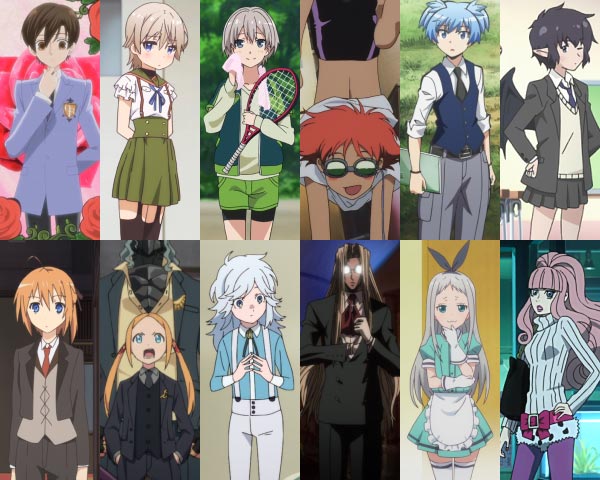
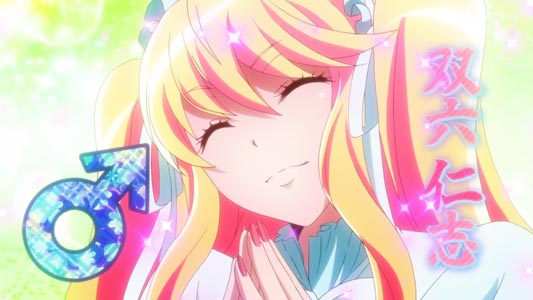
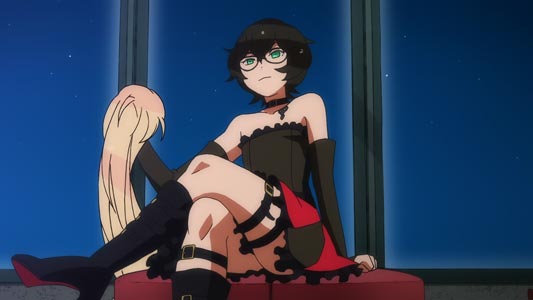
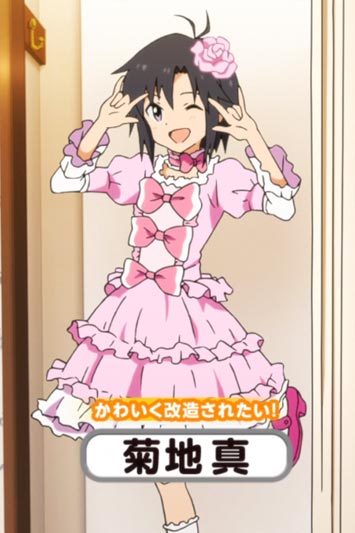
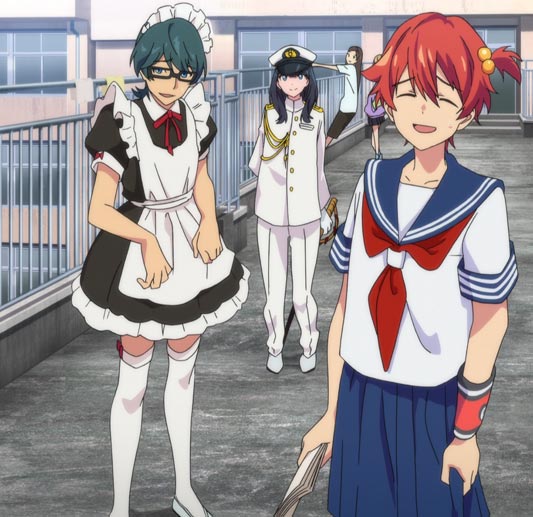




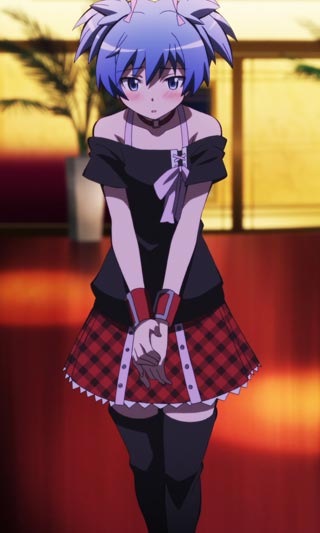
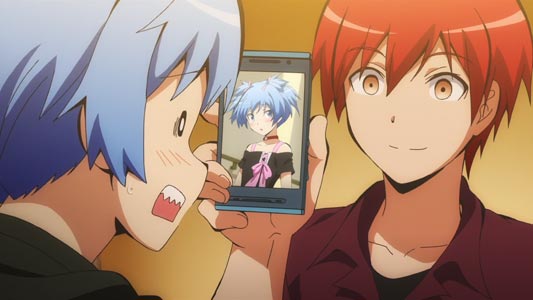
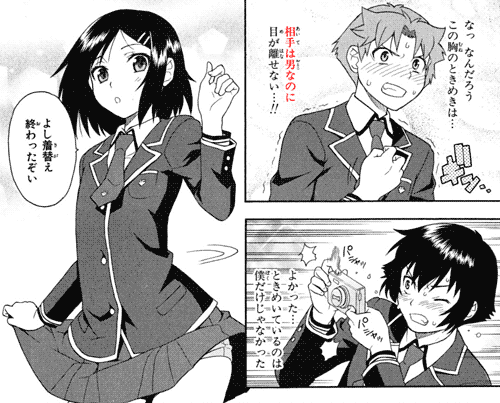

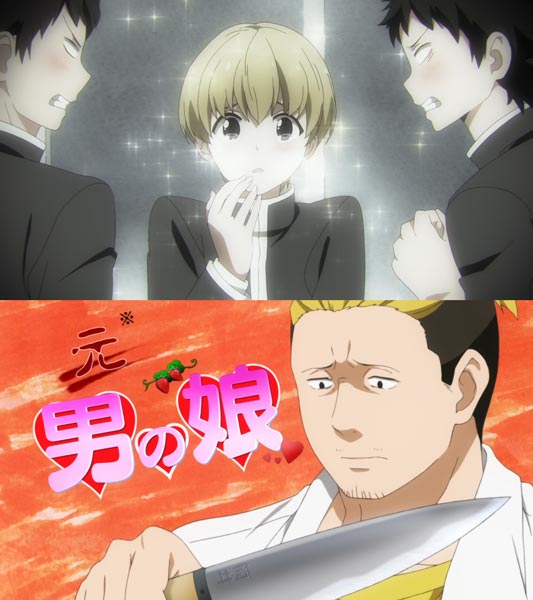

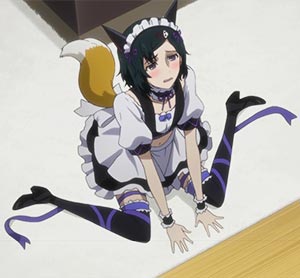
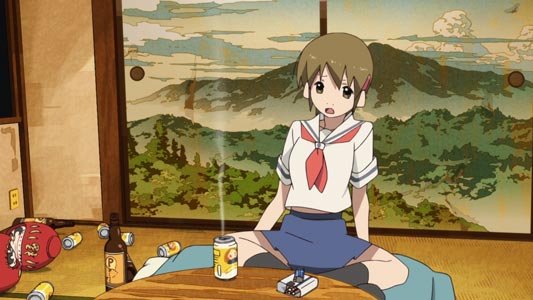
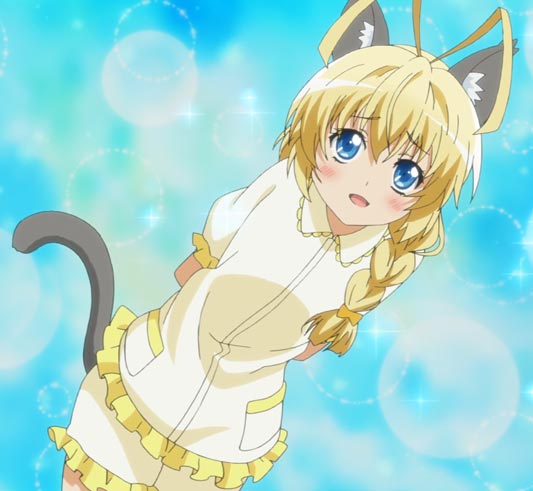
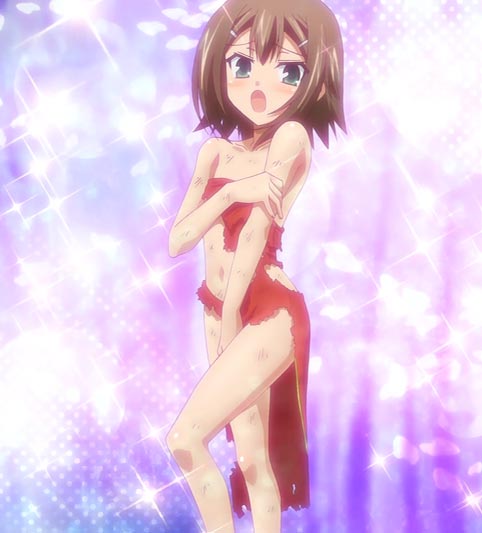
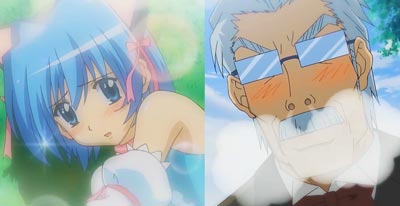
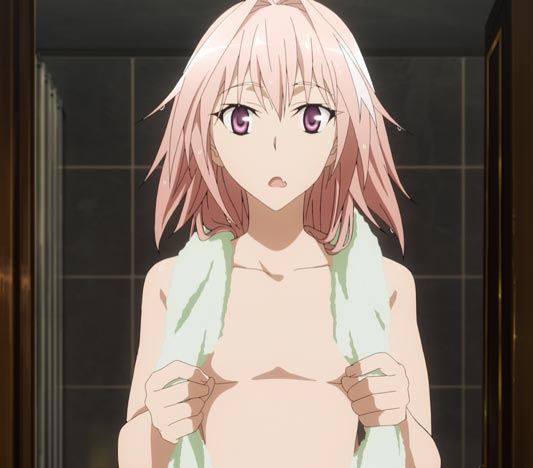

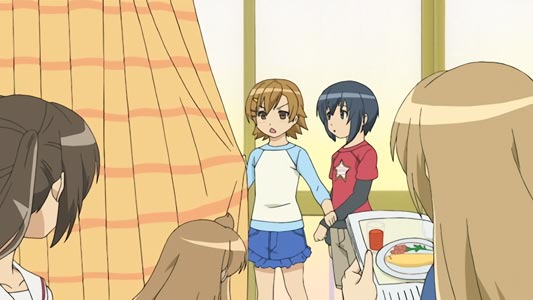

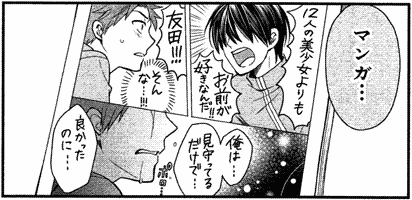
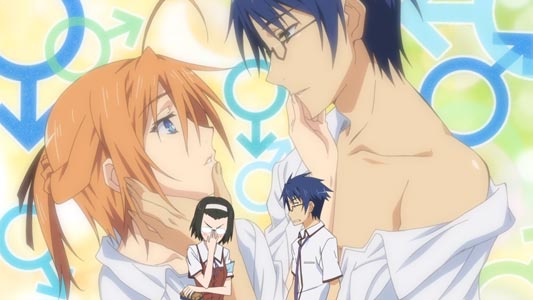
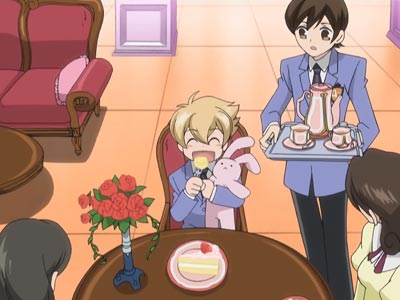
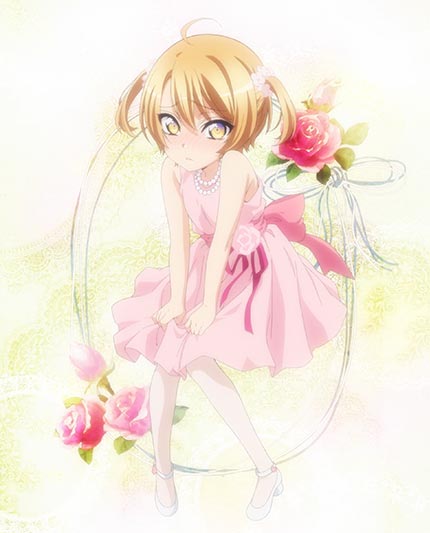
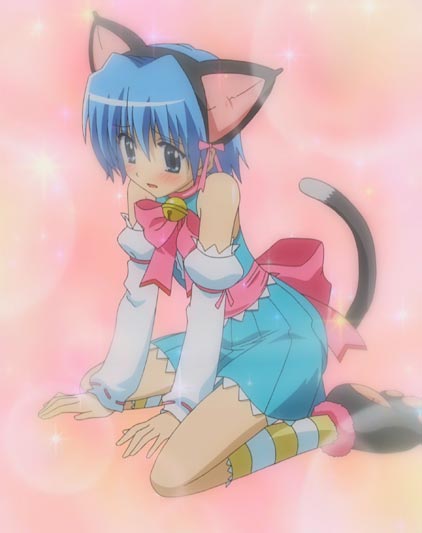
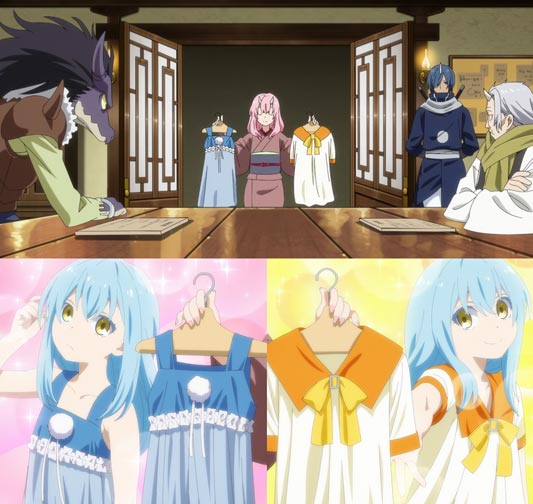
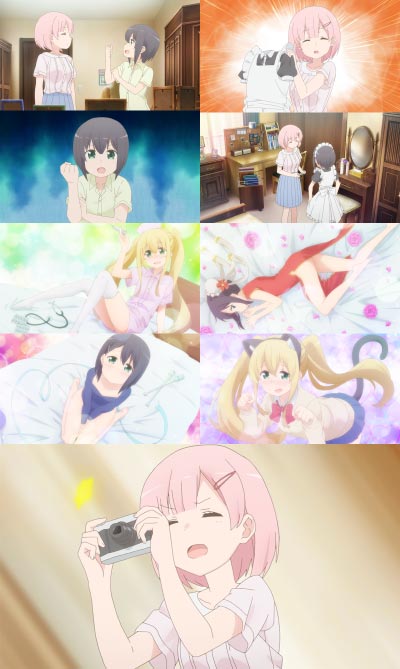
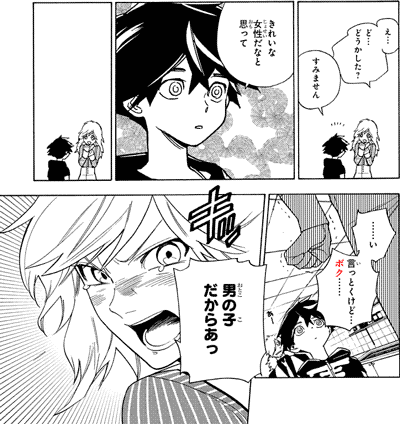
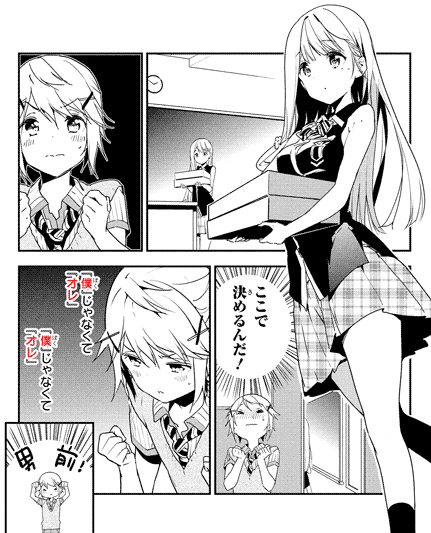
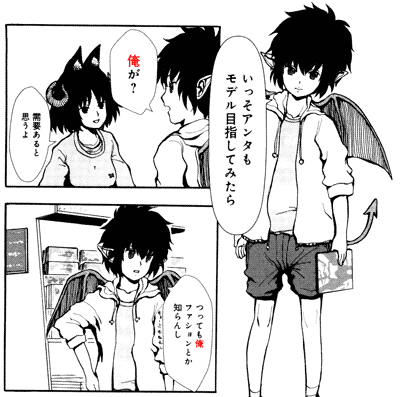

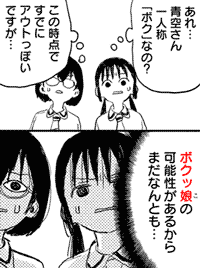
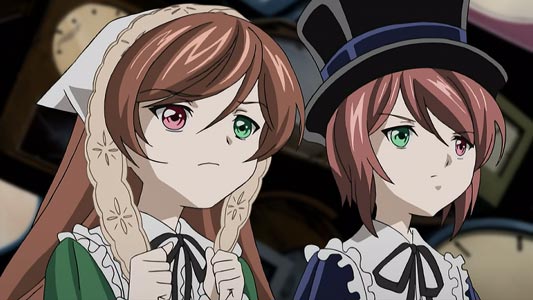
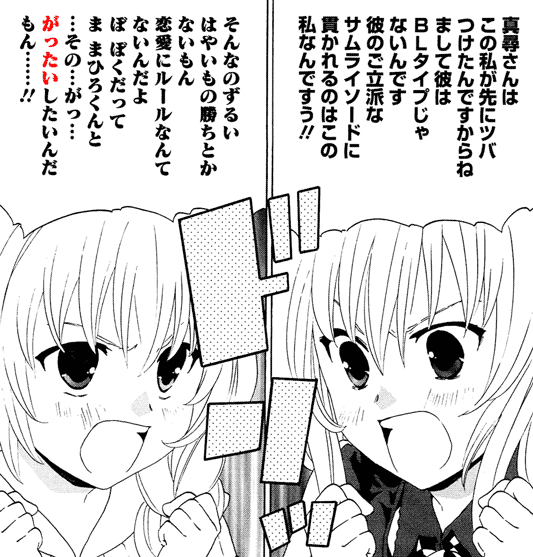
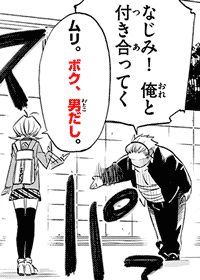
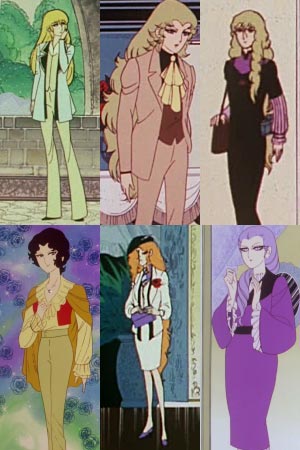

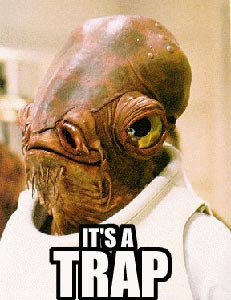
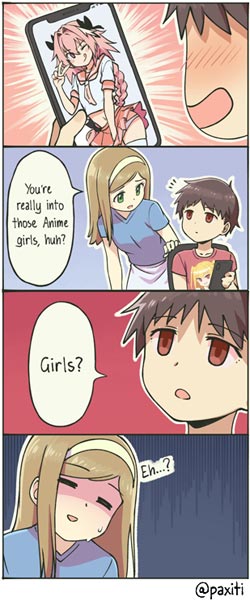
This was a great read, thank you for this!
ReplyDelete